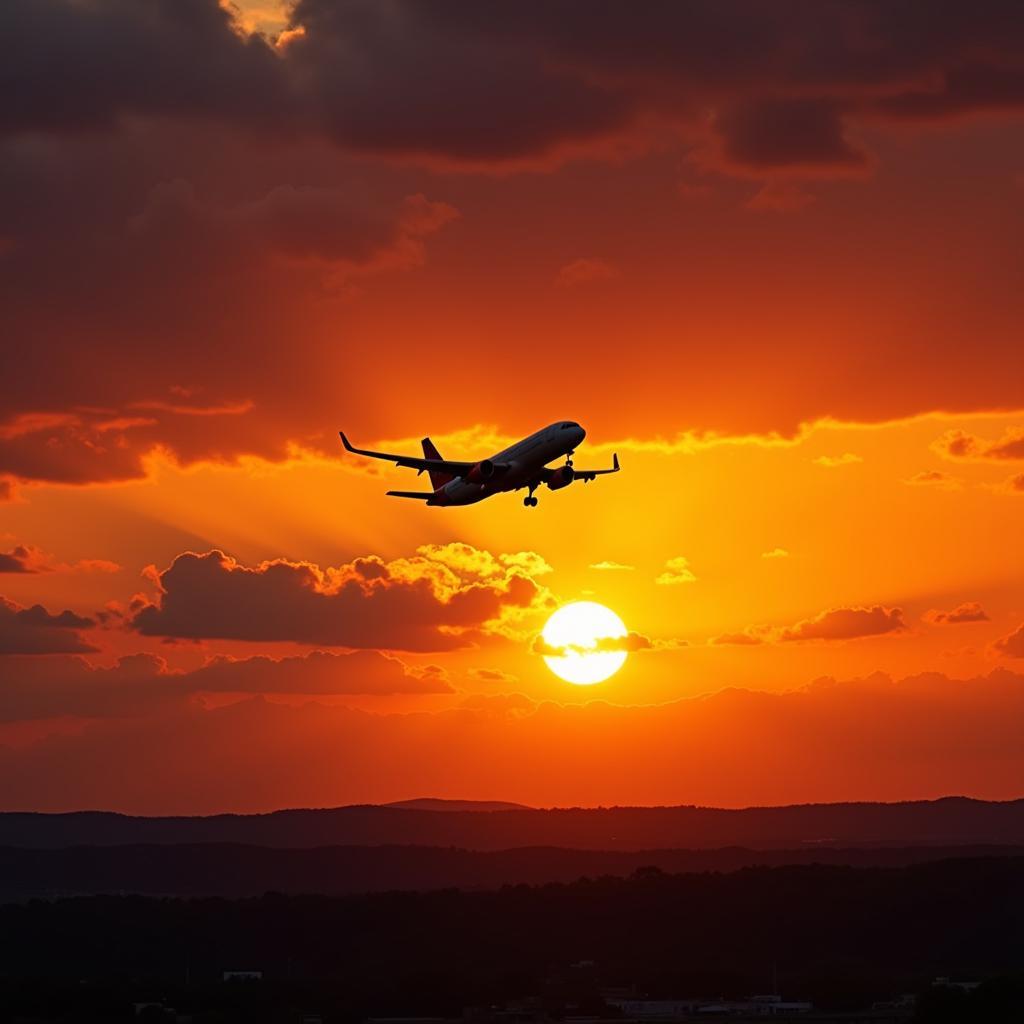Major Airports serve as bustling gateways to the world, connecting people and places through a complex network of flights and destinations. These aerial hubs play a crucial role in facilitating global travel, trade, and cultural exchange.
What Defines a Major Airport?
While there’s no single definition, major airports typically share key characteristics like high passenger volume, extensive route networks, and significant economic impact. They often serve as hubs for major airlines and offer a wide range of amenities and services to accommodate travelers from around the globe.
Key Features of Major Airports:
- Extensive Terminal Facilities: Multiple terminals, often sprawling structures, equipped to handle vast numbers of passengers efficiently.
- Runway Capacity: Multiple runways, often parallel to accommodate simultaneous takeoffs and landings, ensuring smooth operations.
- Global Connectivity: A vast network of routes connecting to destinations worldwide, facilitating international travel and trade.
- Hub Operations: Serving as central connecting points for airlines, enabling passengers to transfer between flights seamlessly.
- Economic Engines: Generating significant economic activity through tourism, logistics, and job creation in the surrounding region.
Navigating the Maze: Tips for Travelers
Navigating major airports can be daunting, especially for first-time flyers. Here are some tips for a smoother experience:
- Arrive Early: Allow ample time for check-in, security procedures, and navigating to your gate, especially during peak hours.
- Check-in Online: Utilize online check-in options to save time and avoid long queues at the airport.
- Pack Smart: Familiarize yourself with baggage restrictions and security regulations to avoid delays at checkpoints.
- Stay Connected: Access airport Wi-Fi to stay updated on flight information, gate changes, and other travel essentials.
- Utilize Airport Maps: Most major airports provide detailed maps and wayfinding signage to guide passengers through the terminal.
Major Airports Around the World: A Glimpse
Explore some of the world’s busiest and most iconic airports:
- Hartsfield-Jackson Atlanta International Airport (ATL): Consistently ranked as the world’s busiest airport by passenger count, ATL serves as a major hub for Delta Air Lines.
- Dubai International Airport (DXB): A global aviation hub connecting the East and West, DXB is renowned for its luxurious amenities and extensive duty-free shopping.
- London Heathrow Airport (LHR): One of the busiest airports in Europe, LHR serves as a major international gateway to the United Kingdom.
For insights into major airports in specific regions, explore our dedicated articles:
 Airplane Taking Off at Sunset
Airplane Taking Off at Sunset
The Future of Major Airports
The landscape of major airports is constantly evolving, driven by technological advancements, sustainability initiatives, and the growing demand for air travel. Here are some key trends shaping the future:
- Smart Airports: Integration of digital technologies to enhance passenger experience, optimize operations, and improve efficiency.
- Sustainable Aviation: Initiatives to reduce carbon emissions, promote eco-friendly practices, and create a more sustainable aviation industry.
- Biometric Identification: Adoption of biometric technologies for seamless and secure passenger processing, from check-in to boarding.
Expert Insight: “The airports of the future will prioritize passenger well-being and seamless travel experiences while embracing technological advancements to create a more sustainable and efficient aviation ecosystem,” says Sarah Thompson, an aviation consultant with over 15 years of experience in airport planning and development.
Conclusion
Major airports are not just transportation hubs; they are vibrant microcosms reflecting the interconnectedness of our world. As gateways to global travel, trade, and cultural exchange, they play a vital role in shaping the future of aviation. For more information on maj airport, continue exploring our website.
FAQ
What is the largest airport in the world by land area?
King Fahd International Airport (DMM) in Saudi Arabia holds the title of the world’s largest airport by land area.
What is the difference between a hub and a spoke airport?
A hub airport serves as a central connecting point for an airline’s network, while spoke airports are smaller airports connected to the hub.
Do I need a passport to transit through a major airport?
Transit visa requirements vary depending on your nationality and the country you are transiting through. It’s essential to check with the relevant embassy or consulate for specific requirements.
What are some tips for dealing with jet lag after a long-haul flight?
Staying hydrated, adjusting to the local time zone, and getting some sunlight can help minimize the effects of jet lag.
How can I find information about airport lounges and their accessibility?
Many airports provide information about lounge facilities and access requirements on their websites or through airport information desks.
For any further assistance, please contact our 24/7 customer support team at +13089626264, email us at [email protected], or visit us at 404 Bothwell St, Oxford, NE 68967, USA.

